Building up your email list is a great start to any email marketing strategy, but the important work does not stop there. Email list segmentation is also a critical factor for your email marketing success.
Segmenting your list helps you to create the best email content for your subscribers, and has also been proven to work wonders on your open rates. However, getting the information you need can be challenging.
Here are some useful techniques you can implement in your next campaign to improve your email list segmentation and get better results.
5 Useful Techniques for Email List Segmentation
1. Optimize your opt in process
The moment a customer chooses to opt in to receiving your newsletter is an important one.
Seize the moment while they are consciously making the effort to engage with your business to find out more about the new subscriber.
Instead of simply asking for their email address, think of a few key details you would like to know to help segment your list.
This could be:
- Name - For better personalisation
- Age - To optimize your content for the target group
- Interests (e.g. kids' fashion, rock music, political news, etc.) - To send relevant deals/content
- Location - For language choice or relevant cultural events
Getting this information straight away will allow you to hit the ground running in terms of producing relevant content and will save you time in the future.
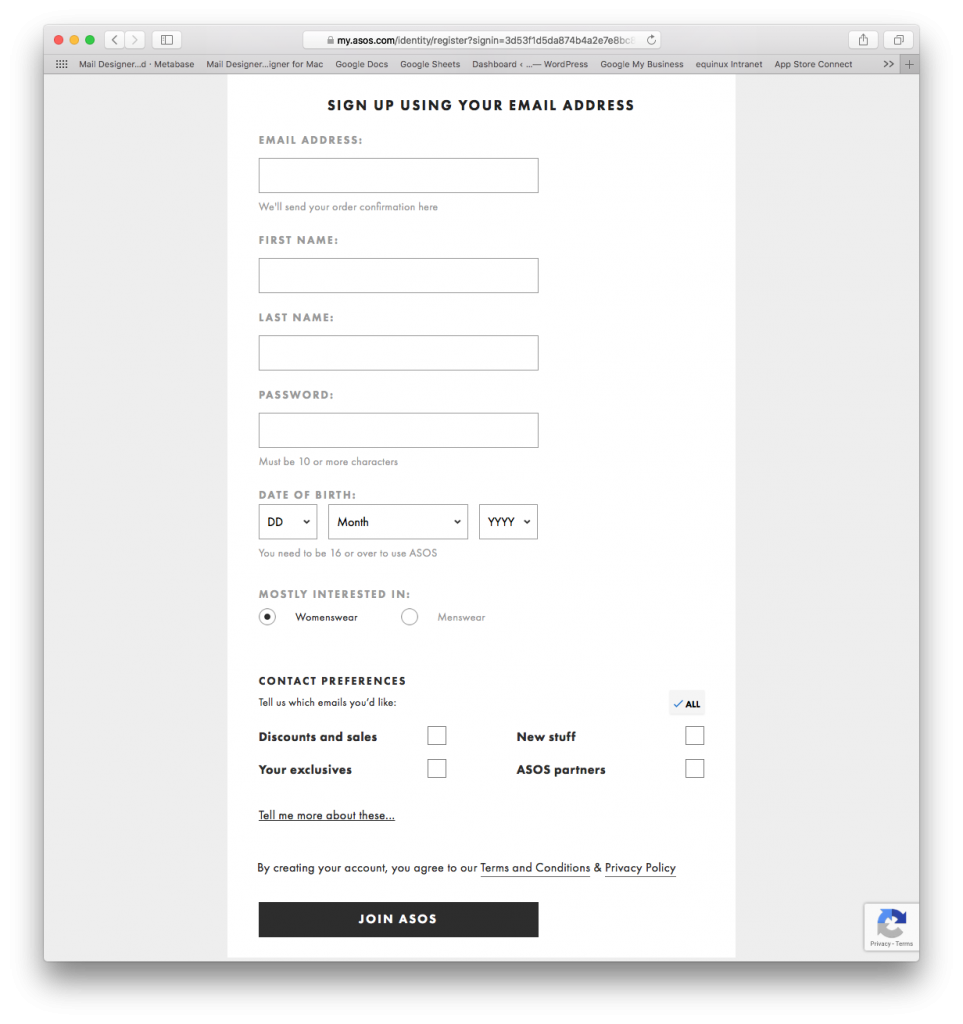
This opt in form by ASOS allows new customers to provide important information about themselves before signing up for their newsletter.
2. Get to know customers through your welcome email
First impressions are everything, and your welcome email is no exception.
Start as you mean to go on and make sure your welcome email presents customers with the opportunity to tell you more about themselves.
Including a link to a basic questionnaire, such as this example by Britannica, is a nice way to let the customer quickly outline their preferences.
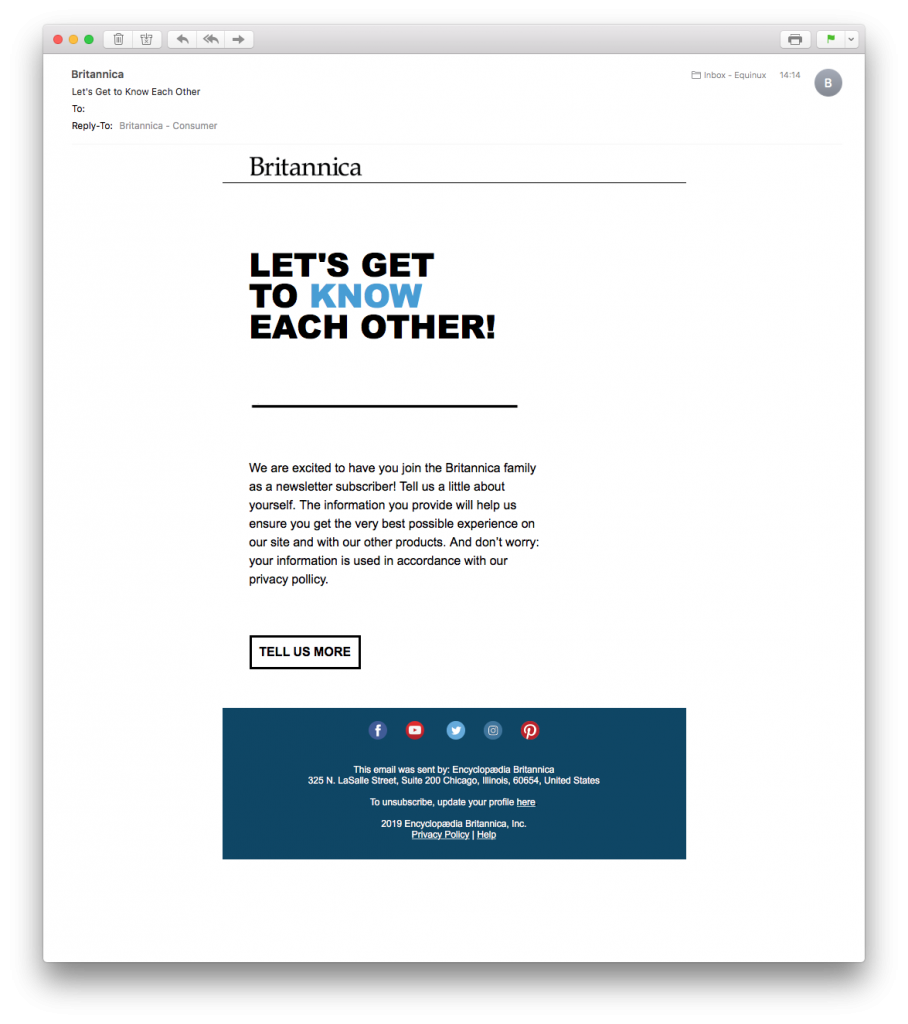
Britannica sent out this great welcome mail for better email list segmentation
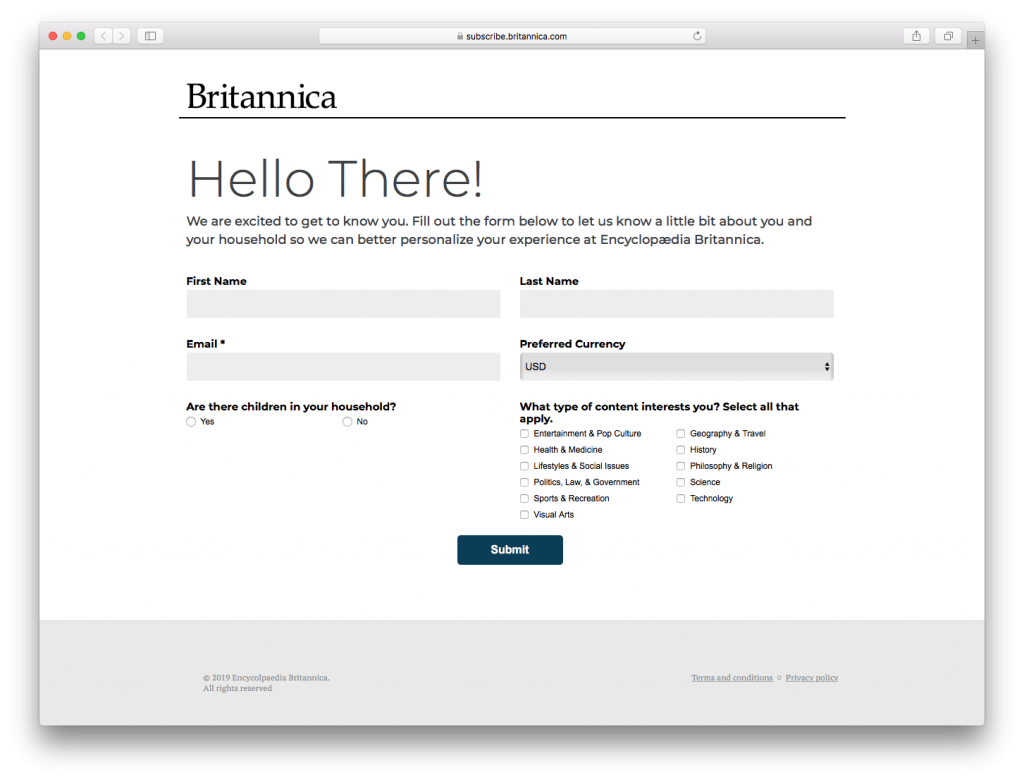
A simple questionnaire helps the new subscriber to easily indicate their preferences.
The customer will also feel confident that they will only be receiving emails relevant to the interests they've outlined.
3. Refer to customer shopping habits
The way your customer shops also tells you a lot about them that can help you with your email list segmentation.
If customers are required to sign in before completing a purchase, you will have all of the purchase information associated with their account.
Recommendation emails
This information can help you to produce better newsletter content. For example, you will have an insight into which kinds of products your customer is interested in (e.g. gadgets, outdoor clothing, sports equipment, etc.) This will allow you to send them more relevant recommendations.
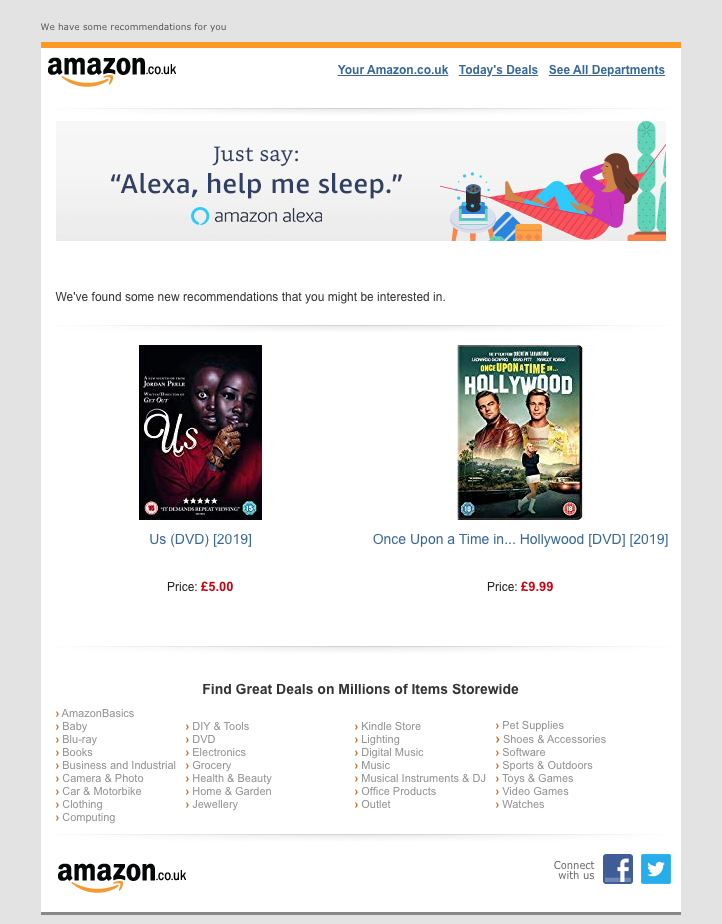
Tracking customer purchase information helps Amazon send more relevant product recommendation emails.
Service and subscription models
If you offer a subscription service, it is also useful to track customer activity to send them more effective emails.
This could range from onboarding emails, re-engagement campaigns, or sales-based up-sell emails. Knowing more about your customers helps you target them with a suitable call-to-action.
For example, sending an email with an upgrade call-to-action to a customer who hasn't used your service in some time is far less effective than targeting them with a re-engagement campaign.
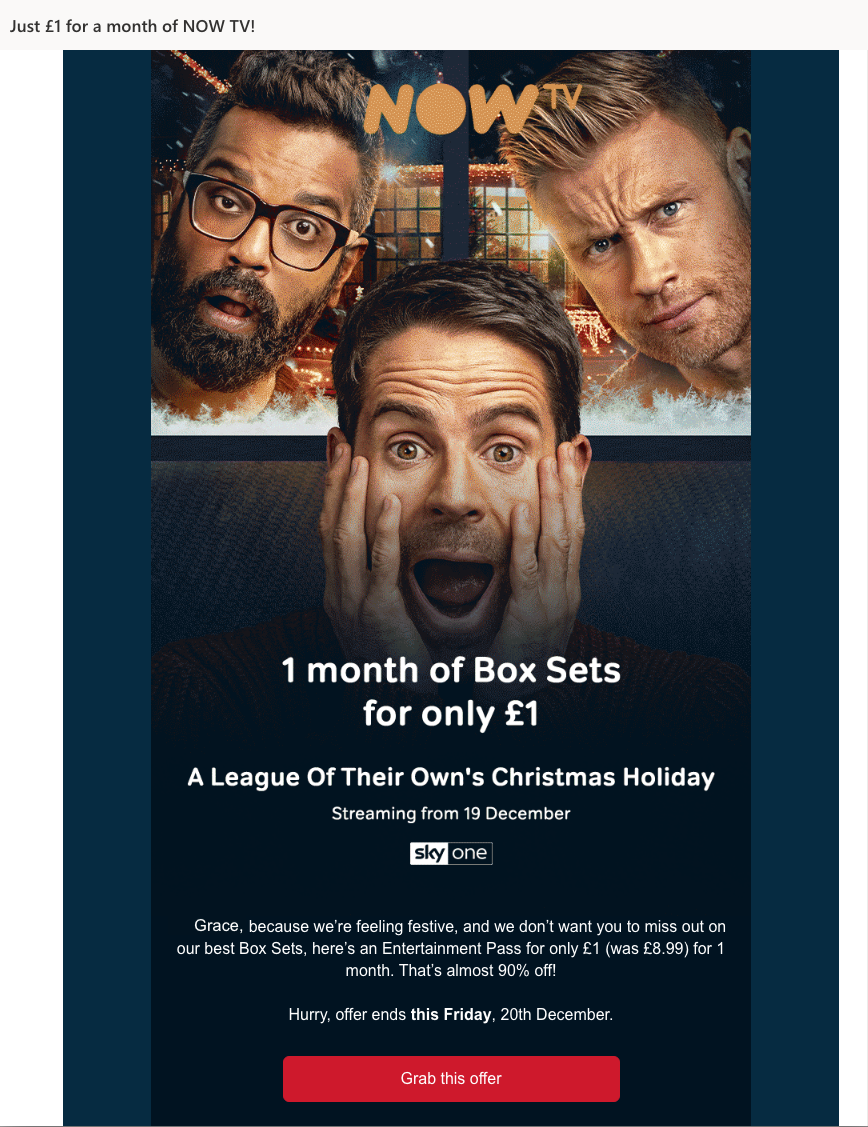
Knowing more about customer behaviour allows NOW TV to reengage lapsed subscribers with new offers.
Segmentation by abandonment rate
Behaviour tracking also helps you segment your list based on abandonment rate.
If a customer did not complete the checkout process, you can use this chance to send them an abandoned cart email. This is a great tool for reengagement and could be the key to you increasing sales which would have otherwise been lost.
This technique can also be applied for an abandoned onboarding process as a form of re-engagement.
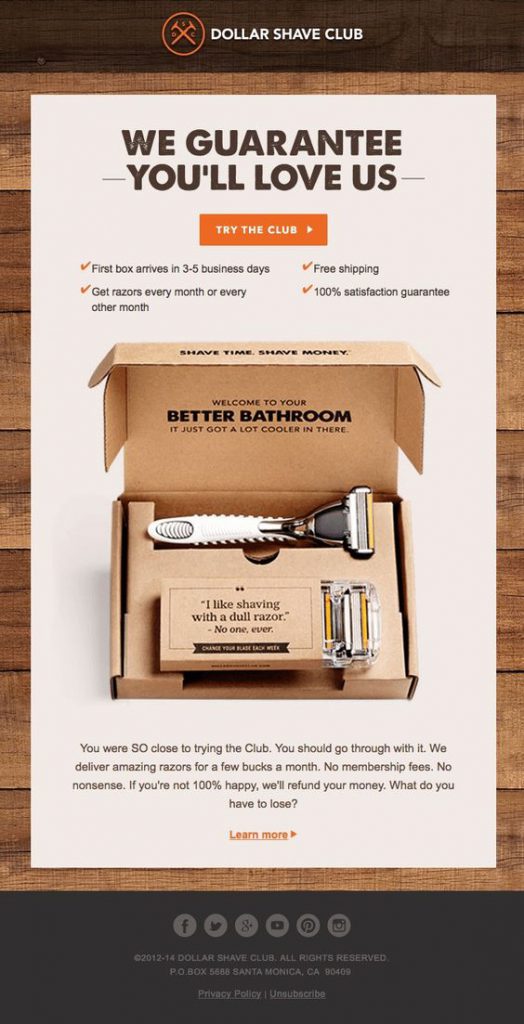
The Dollar Shave Club reacts to an abandoned onboarding process by sending out this smart re-engagement style email.
4. Run a birthday campaign
Everyone loves a birthday! A birthday email is a great opportunity to send customers a personalised offer.
To do this, you first need to find out when their birthday is. If you haven's found this out during the opt in process, putting together a quick email campaign helps fill in this missing information later on.
Once you have the customer's birthday on record, the world is your oyster. You can segment your list by birthday, birthday month, age, star sign, etc and create unique birthday related content to engage your subscribers.
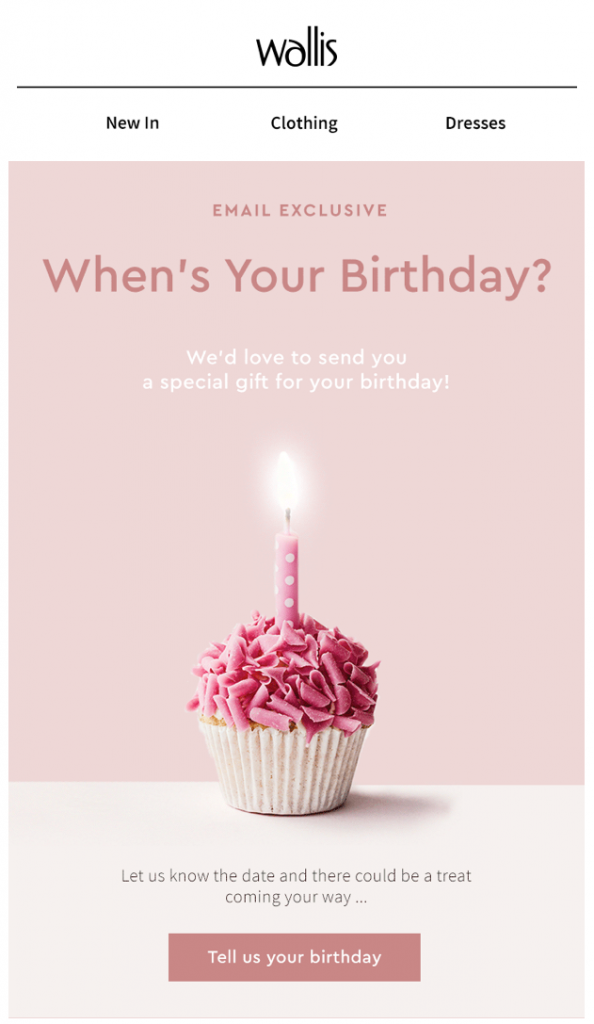
Wallis used this campaign to find out more about subscribers' birthdays and send them unique, personalised content later on.
5. Give subscribers an incentive to tell you more
Getting information from your subscribers to help with your email list segmentation can be tough. Providing an incentive is often a good way to boost engagement.
Offering a discount voucher in exchange for information is one potential way to gather more useful data to use for your email campaigns.
Alternatively, you could offer subscribers a useful guide or resource as a way to get them to tell you more about themselves.
In this example by Neil Patel, new users are encouraged to take a quiz to then receive relevant marketing advice. This is elaborate for a newsletter sign up process, but ultimately is a win-win situation. The user provides all the information to help categorise them correctly and is rewarded with a useful guide at the end.
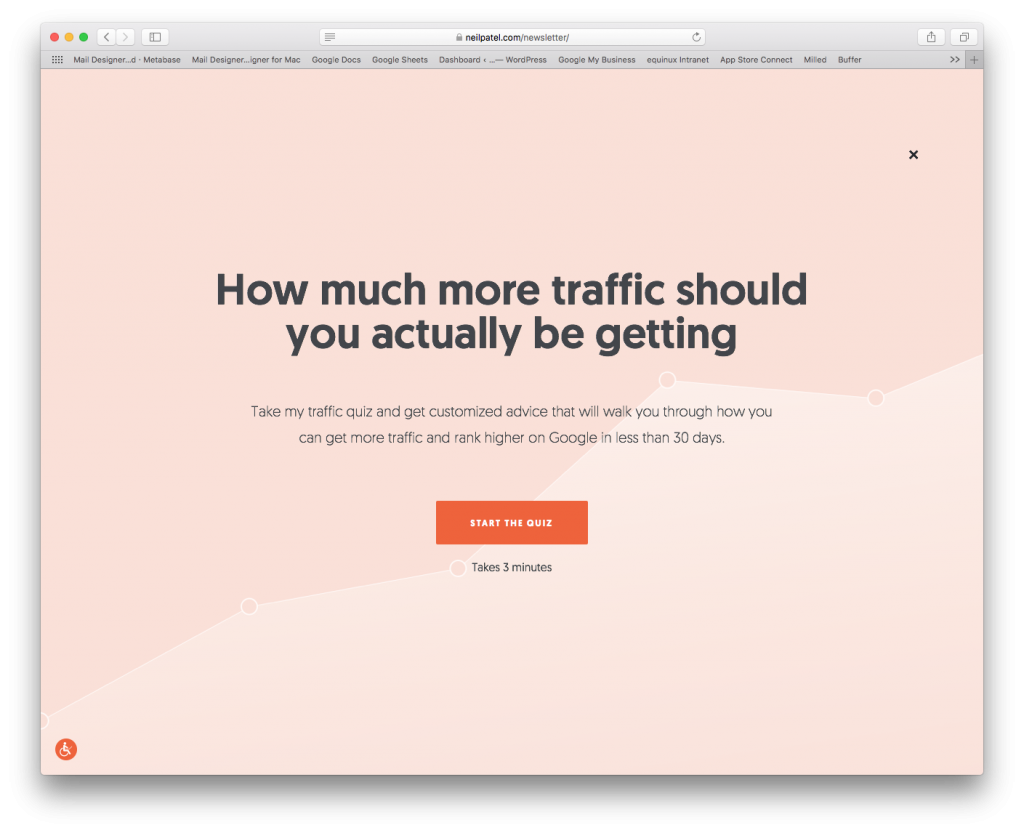
Neil Patel's quiz is an innovative way to segment his email list based on key subscriber characteristics.
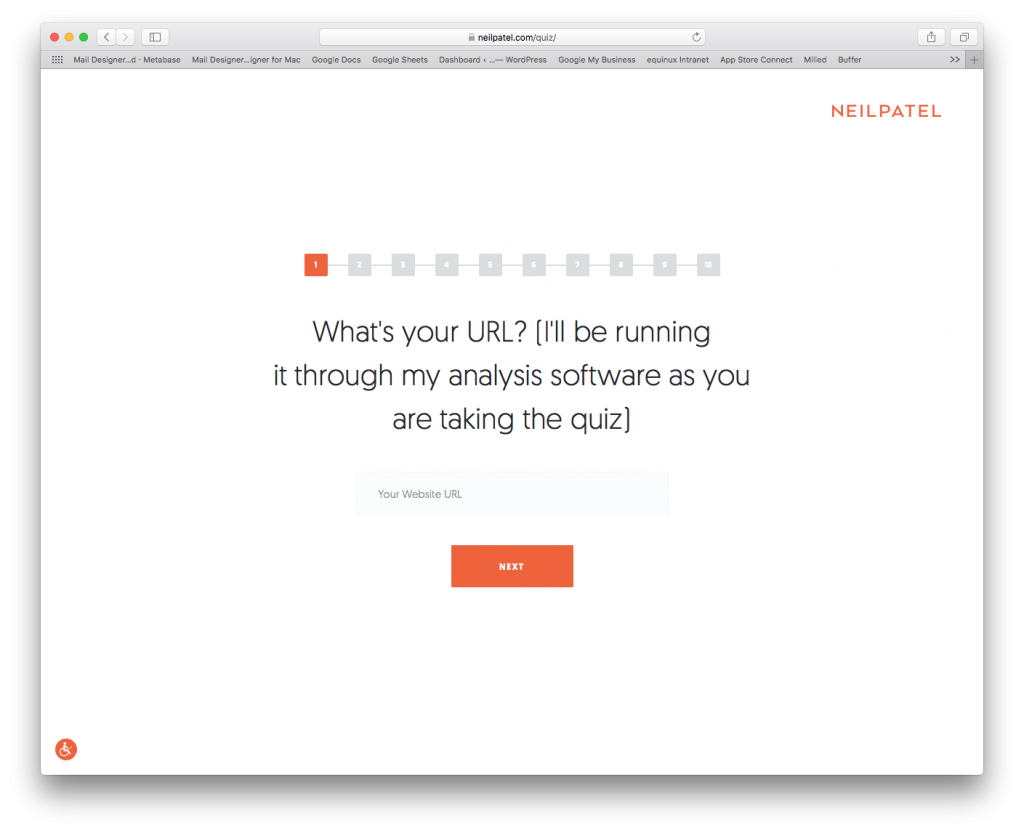
Neil can understand more about new subscribers after using his quiz to ask critical questions.
Try out these email list segmentation techniques
Many of the techniques listed above require a trigger-based transactional email.
Try out the tools and resource provided by Mail Designer 365 today to create a HTML email template to use with your campaign.
Use great email design to convince your subscribers to respond to your campaigns and gather more information to help you with your email list segmentation.
Start your free trial today to see what you can achieve.
Until next time,
Your Mail Designer 365 Team

